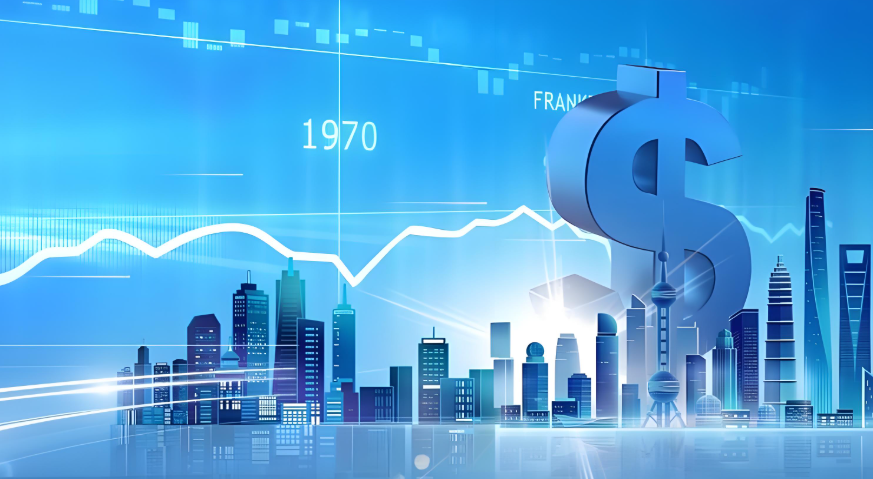What to Do if Interest Rates Rise This Year
Advertisements
In recent months, investors have found themselves grappling with a rather uncomfortable question: what justification could the Federal Reserve possibly offer if they were to raise interest rates this year? The very idea of an interest rate hike seems to create a sense of unease, especially when the CME Group's FedWatch tool indicates that the likelihood of such an event appears almost non-existent at the moment. However, the ever-evolving landscape of the economy has led many to reconsider whether the Fed might backtrack on the aggressive easing policies it embraced last year.
The complexities of the Federal Reserve's decision-making processes extend far beyond merely assessing how "hot" the economy is at any given time. Factors such as the new government's stance on tariffs, immigration, and taxation can significantly influence inflationary trends and, by extension, monetary policy shifts. As Wall Street Journal columnist James Mackintosh pointed out recently, a pivotal question for investors is whether the obstacles to increasing interest rates are greater than those associated with decreasing them.
This line of inquiry takes on additional urgency in light of rising inflation indicators. Market analysts are bracing for the upcoming U.S. Consumer Price Index (CPI) release, with expectations that it will show a return to the 3% range for the first time in five months. This development could place significant stress on financial markets, introducing layers of uncertainty. Despite the current perception that a rate hike is unlikely in the near term, market sentiment remains cautious. The mere mention of interest rate discussions from the Fed could trigger a flurry of market activity—a scenario where investors would potentially pivot away from riskier assets in favor of safer options. The consequences of such a shift could result in skyrocketing bond yields and tumultuous fluctuations in stock values.
However, James Mackintosh emphasized the Fed's inherent caution when it comes to altering significant aspects of its policy framework, such as interest rates. Historically, since the narrative shifted to include post-meeting policy statements in 1994, the only instance of a swift transition from rate cuts to hikes occurred in 1998—a rare scenario driven by the looming collapse of Long-Term Capital Management, which posed a threat to the stability of Wall Street. Following a rapid drop in interest rates, the Fed refrained from increasing them until they could affirm the steadiness of the economic recovery months later.
In analyzing the Fed's actions surrounding the inflationary crisis of 2021-2022, some analysts believe the central bank did not respond in a timely manner. This time around, with recovery efforts potentially imperiled, there may be an inclination for a more rapid response from the Fed should inflationary pressures intensify. Ed Al-Hussainy, a global rates strategist at Columbia Threadneedle Investments, commented on this behavior:

"The Fed will not hint at a rate hike until they have more data to back it up. However, if the incoming data becomes overwhelming, they might break through that mental barrier quite swiftly."
For investors who perceive that the challenges associated with raising rates are insurmountable, there may be merit in considering investments in shorter-duration government bonds, such as those maturing in one or two years. This strategy could yield dual benefits:
"If the economy performs well, the Fed will maintain low rates, and investors will reap returns; conversely, if the economic outlook worsens, the Fed may cut rates, resulting in an uptick in bond prices."
Yet beneath this seemingly sound strategy lies a web of risks. Mackintosh highlights that the primary source of concern centers on potential rate hikes from the Fed. Should the central bank indeed opt to increase rates, fundamental market principles suggest that bond prices will inevitably decrease, directly impacting investors' portfolio allocations. There exists another, more subtle set of risks that could emerge if the Fed chooses to remain static. Even in the absence of action, traders might preemptively prepare for rate hikes, leading to an early sell-off in government bonds—this phenomenon has already been observed in long-term bond markets recently.
Such undercurrents of potential rate hikes may have already begun to manifest. Over the past eight months, the yield on the two-year U.S. Treasury notes plummeted from 5% to about 3.5%, hovering around 4.3% at present. Currently, signs of potential interest rate hikes are becoming apparent, especially within options related to secured overnight financing rates (SOFR). The Atlanta Federal Reserve has noted a 35% likelihood of a rate hike before year-end, a notable increase of five percentage points since the Fed's cut in rates last December. Nonetheless, general market consensus still does not fully align with an imminent rate hike.
Gregory Peters, co-chief investment officer at PGIM Fixed Income, indicated that the market has partially factored in this asymmetric situation, albeit with considerable volatility:
"I believe the consensus is that the divergence between potential cuts and hikes presents an opportunity for investors. However, we are currently navigating an exceedingly wide range of potential outcomes."
Given the capricious nature of the global economy, overwhelming concerns about inflation loom large over the investing landscape. The uncertainty surrounding the Fed's future actions continues to escalate, spurred on by these dual pressures. Such dynamics have driven the U.S. VIX index, often referred to as the "fear index," upward, nearly reaching the critical 20-mark threshold. This significant shift serves as a vivid indicator of the mounting anxiety swirling within financial markets, highlighting that investor sentiment is fraught with apprehension.
Categories
Latest Post
- The Dollar Devours the Indian Rupee
- Increasing Uncertainty in Global Capital Markets
- Is the U.S. Government Debt Bubble About to Burst?
- Nurturing Innovation: A Gradual Approach
- Can the EU Reinvent Its Competitiveness?
- Significant Decline in the Proportion of High-Risk Banks
- Market Volatility Expected, but Short-Term Outlook Positive
- Confidence in Slowing U.S. Inflation
- Wall Street's Pay Surge: A Financial Shakeup!
- Yen Surges in Response